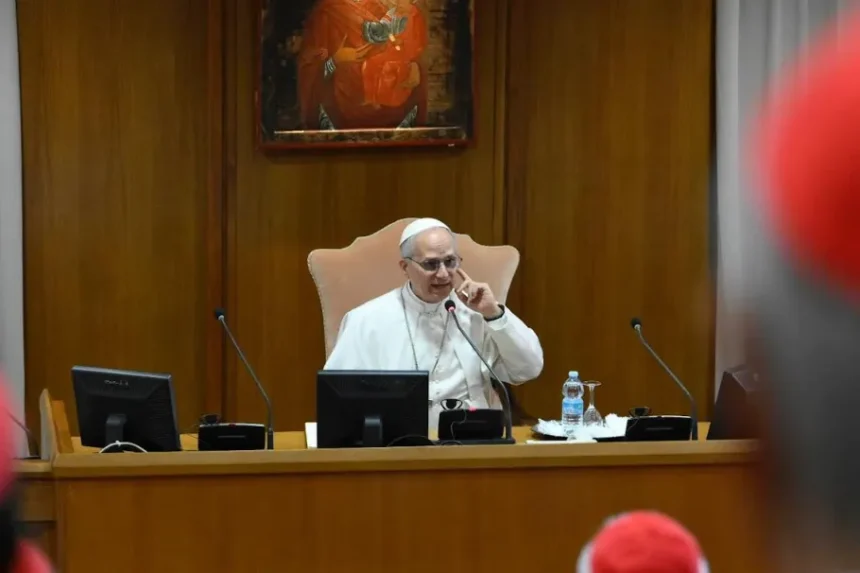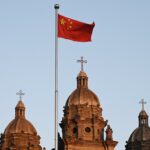VATICAN CITY – Pope Leo XIV started his papacy during a period of deep financial strain at the Vatican. The Holy See is managing a growing budget deficit, a widening gap in its pension fund, and a steady drop in donations.
Donations from abroad, especially from wealthier countries such as the United States and Germany, have decreased. Secularisation, unresolved financial scandals, and frustration over Pope Francis’ handling of issues like climate policy and migration have all played a part in this downturn.
The Vatican’s pension fund is in serious trouble. In 2022, the shortfall was estimated at €631 million (£549 million), and by 2025, some sources put the deficit between €1.4 and €2 billion. Longer life expectancy and a lack of changes to retirement payouts have pushed costs higher. The pension scheme promises set payments, regardless of whether there are enough funds to cover them, which has intensified the problem.
Elected in May 2025 as the first American pope, Leo XIV has spent his first month meeting with leading Vatican officials, including the president of APSA. This move shows he is making financial matters a top priority.
So far, he has not rolled out sweeping financial policies or made new appointments. His approach is measured, preferring to listen and understand the complexities before taking action. This is different from Pope Francis, who quickly pushed for reforms.
Leo XIV’s background in mathematics and administration, along with his experience in the US church, could help him tackle these financial issues. He is expected to focus on fundraising, making better use of Vatican assets, lowering costs, and continuing reform work. However, he faces strong resistance, ongoing drops in donations, and the challenge of balancing the church’s finances with its spiritual work.
Shrinking Donations
Anyone can donate to the Vatican, but there are two main sources of regular funds. Canon law requires bishops worldwide to send an annual contribution. The amount depends on each diocese’s resources. Between 2021 and 2023, US bishops gave over a third of the $22 million (£17.9 million) collected yearly, according to Vatican figures.
The other main source is Peter’s Pence, a collection held in June each year. From 2021 to 2023, US Catholics donated an average of $27 million (£22 million) annually, which made up more than half of the global amount.
Even with strong support from Americans, total donations to Peter’s Pence have dropped. After peaking at $101 million (£85 million) in 2006, contributions levelled off at around $75 million (£63 million) during the 2010s. They then fell sharply to $47 million (£39 million) in the first year of the COVID-19 pandemic, as churches closed their doors.
Contributions have stayed low since then. The Vatican’s failed investment in a former Harrods warehouse in London became public, revealing that most Peter’s Pence money had been used to cover Vatican deficits, rather than for charity, as many donors believed. This scandal and the trial that followed damaged trust.
Peter’s Pence donations ticked up slightly in 2023, and Vatican officials hope to see further growth, especially as donations often rise after a new pope is elected.
Vatican Seeking New Donors
The Vatican bank and the city state’s governorate, which runs the museums, also make yearly contributions to the pope. About ten years ago, the bank gave as much as €55 million (£48 million) per year. By 2023, however, it gave nothing directly, despite showing a net profit of €30 million (£26 million). The governorate’s contributions have also dropped.
Some Vatican staff say it’s hard to ask parishioners for more help when internal bodies are giving less.
Leo XIV will have to win support from outside the United States, which is challenging due to different giving habits. In much of Europe, giving is handled by companies or governments, while individuals donate less and get fewer tax breaks.
Rev. Robert Gahl from Catholic University of America’s business school says the Vatican should shift away from only asking for help when there’s a crisis. Instead, he believes Catholics should see giving as a long-term investment in the church’s mission.
Speaking after Leo XIV’s installation, which brought around 200,000 people to St. Peter’s Square, Gahl pointed out the missed opportunity for people attending to support the new pope and the Vatican’s work.
In the US, passing collection baskets during Mass is routine. That’s not the case at the Vatican.
Untapped Property Assets
The Vatican owns 4,249 properties in Italy and around 1,200 others in cities like London, Paris, Geneva, and Lausanne. Only about 20 percent are rented at market rates, according to APSA’s annual report. About 70 percent generate no income, as they are used for church offices. The rest are let at reduced rates to Vatican staff.
In 2023, these properties brought in only €35 million (£30 million) in profit. Experts have long highlighted undervalued real estate as a missed income source.
Ward Fitzgerald, president of the US-based Papal Foundation, believes the Vatican should also consider selling properties that are too costly to keep. Many bishops in the US and Europe are facing the same issue, as shrinking congregations leave many churches empty.
Recently, the Vatican sold its embassy property in Tokyo’s exclusive Sanbancho district to a developer planning a new apartment building, according to Kensetsu News.
There is still resistance within the Vatican to selling even loss-making properties. In 2021, officials decided not to sell the Fatebenefratelli hospital in Rome, which was struggling financially. Pope Francis instead set up a new foundation to raise funds for the hospital and others like it.
Fitzgerald, who has years of experience in property investment, says the Vatican needs to accept that much of its real estate isn’t helping its mission and could be better used or sold.







